Results 3,331 to 3,340 of 12096
Thread: Anandtech News
-
10-15-13, 08:30 AM #3331
Anandtech: Microsoft Comments on State of Direct3D, Mantle Support, & Names XB1 API “
In a somewhat unusual technical/promotional blog entry called “Raising the Bar with Direct3D”, Microsoft has released some additional details on the version of Direct3D for Xbox One, along with providing a general summary of the state of Direct3D 11.2.
First and foremost, for the Xbox One we finally have an official name for the Xbox One’s version of Direct3D along with some confirmation of some general details about the API. The XB1’s version of the API is being called Direct3D 11.x – X as in Xbox, not an algebraic X – and as expected it’s a superset of Direct3D 11.2. Microsoft doesn’t go into further detail on what else that superset contains, but traditionally we’d expect to see further API calls that are specifically designed to take advantage of the underlying APU, including of course the low-level programming constructs to do close to metal programming and fully exploit quirks such as the console’s 32MB of eSRAM.
Furthermore it’s interesting to note that Microsoft also took the time to specifically mention API overhead in a high-level context, and that they’ve been doing a lot of work to chip away at said overhead for the Xbox One. This is fairly similar to how Microsoft is said to have approached Direct3D for the 360, being able to exploit the fixed platform to remove some of the overhead from abstraction while maintaining the functionality of the high level API functions.
Moving on to Direct3D 11.2 in general, the next section of the blog is primarily a summarization of the Direct3D 11.2 feature set, with Microsoft primarily reiterating support for tiled resources (the headline feature for 11.2) along with briefly mentioning other features such as pre-compiled headers and CPU/GPU memory sharing improvements. Unlike Direct3D 11.1 and Windows 8, 11.2 is coming with a Windows point update, so it’s a similarly smaller addition to Direct3D.
However it’s the final section of Microsoft’s blog that may be the most interesting, although it’s also the least detailed. In discussing the future of Direct3D, Microsoft specifically mentions their general commitments to improving Direct3D alongside “bringing the lightweight runtime and tooling capabilities of the Xbox One Direct3D implementation to Windows,” though providing no details on how they intend to accomplish the latter. Assuming Microsoft intends to keep up a yearly(ish) development cadence for Windows, this may be something we see as soon as next year. There’s certainly quite a bit of interest in cutting down on the CPU overhead in graphics APIs, due in part to declining improvements in single-threaded CPU performance gains, so this is something that’s going to be worth keeping an eye on.
Finally, in an unexpected move, Microsoft also used the blog to quickly address the subject of AMD’s Mantle API, specifically saying that the Xbox One doesn’t support it nor OpenGL. The fact that Mantle isn’t supported comes as no surprise – Xbox One already has its own low level constructs versus the still in development Mantle – but we weren’t expecting Microsoft to comment on the matter since they aren’t involved in the development of Mantle. Though this unfortunately doesn’t shed any further light on the big question of just what Mantle adopts from the low-level programming constructs in Direct3D 11.x.

More...
-
10-15-13, 09:30 AM #3332
Anandtech: AMD Expands On Microsoft Blog Post, Reiterates Mantle Goals
Picking up from where we left off with Microsoft's blog post on the state of Direct3D, AMD has released their own short statement through Twitter expanding on Microsoft's blog post with respect to Mantle. Essentially reiterating their design goals for Mantle, AMD laid out why Mantle isn’t in the console (it already has a low level API) and how they intend for Mantle to bridge the gap with console code. Strictly speaking there isn’t any new information here regarding Mantle, but it does serve to provide a short and simple description of Mantle straight from AMD.
Mantle is NOT in consoles. What Mantle creates for the PC is a development environment that's *similar* to the consoles, which already offer low-level APIs, close-to-metal programming, easier development and more (vs. the complicated PC environment). By creating a more console-like developer environment, Mantle: improves time to market; reduces development costs; and allows for considerably more efficient rendering, improving performance for gamers. The console connection is made because next-gen uses Radeon, so much of the programming they're doing for the consoles are already well-suited to a modern Radeon architecture on the desktop; that continuum is what allows Mantle to exist. ^RHOf course the big question remains unanswered: just how similar Mantle is to the Xbox One's low level API constructs? AMD has laid out a strong case for why it's important to make the porting of code from the console as easy as possible, and in the process left a number of hints indicating that Mantle should be very similar, including committing to supporting Direct3D's High Level Shader Language (HLSL) within Mantle. We should have a better and more complete picture of the full API next month when AMD's 2013 Developer Summit convenes.

More...
-
10-15-13, 05:00 PM #3333
Anandtech: Humble Bundle with Android #7
In the latest edition of the Humble Bundle, there’s another collection of fairly popular games available. As usual, you unlock the core set of games with any donation of one dollar or more, and if you beat the current average you get a couple extra games thrown in. The interesting twist in this bundle is that all of the games are also available for Android – along with Windows, OS X, and Linux. Here’s a quick look at the games included (ordered in terms of increasing age):
Ticket to Ride (Android: June 2013), 91% iOS average; regularly priced at $10 (Steam) or $7 (Android); includes USA 1910 DLC ($2). This is an adaptation of the popular board game of the same name, finally available on Android. The iOS release (which is a couple years old) proved quite popular and received great reviews, and anyone that’s a fan of the board game will almost certainly appreciate the mobile variant. The game supports local pass-and-play (sharing a tablet), solo play (against the AI), and online play. The USA 1910 DLC adds three new game variants and 35 new destinations, for a combined 69 destinations with the main game.
Anodyne (February 2013), 75% average, regularly priced at $10. This is a recent indie game in the vein of early Zelda titles (e.g. Link’s Awakening). It’s a relatively short game, with most people able to get through it in a few hours, and the graphics are like other 2D 16-bit games from the SNES era. You travel through a dream world in the game, exploring a land that doesn’t always make sense, and there’s a nice sense of foreboding – that something’s not quite right. Secrets and other collectibles abound, and this is pretty standard JRPG/Adventure fare. The Android port is only a few hours (or days, depending on when you see this) old, so if you never picked it up for iOS or Windows/OS X/Linux now would be a great time to grab it.
Incredipede (October 2012), 74% average, regularly priced at $10. This is a fun and strange puzzle game where you basically build a “robot” of sorts by adding legs and muscles to an eyeball (Quozzle) and then control your creation with the left and right arrow keys. Your task is to rescue your sister incredipedes, over the course of 60 levels (plus the option to create your own with the level editor). Some may get frustrated, others will love playing with their creations – I can see this as being one my 10-year-old will love.
Greed Corp (December 2010), 76% average; regularly priced at $10. This is a turn-based strategy game where the focus is on resource management, except the resource is the ground you walk on. You can either harvest land to get resources to build units, or you can place units on the land to attack/defend. The game also supports multiplayer (online and local, or against the PC), and it comes with a single-player campaign to introduce you to the game play.
The above four games are for anyone participating in the Bundle with a $1 or higher contribution; pay more than the average (currently $6.60) and you’ll add two more games, plus some “secret” games that will be revealed next Tuesday. You can donate your money to charity, the developers, or the Humble Bundle as you see fit. Obviously we don’t know what additional games are coming, but the two current extras are well known titles:
The Bard’s Tale (PC June 2005, Android September 2012), 70% average (PC)/79% iOS; regularly priced at $10 (PC), or $3 (Android). This is actually a game I own already, for both PC and Android. The classic Bard’s Tale trilogy was one of the earliest RPG games I played, back on a Commodore 64 in the mid-80s. Truthfully, it was and is quite painful to play, with navigation that gets confusing at best. The second title in the series improved things, but it was really the third game (Thief of Fate) that captured my imagination. When they rebooted the series with inXile Entertainment taking the lead, I was hoping for more, and I was a disappointed. The Android release however has done better, and while the game is still flawed it’s at least better than another round of Angry Birds. You also get the original trilogy, if you care to take a trip down memory lane, but you’ll have to be more forgiving/dedicated/patient than I am to make it through those.
Worms Reloaded (PC August 2010), 79% average; regularly priced at $20. This is the most expensive game in the list, and for anyone unfamiliar with the Worms games, you’ve been missing out. This is arguably the definitive edition of Worms, a modernized take on the classic artillery battle with cute worms wielding unlikely Weapons of Mass Destruction. The latest release includes online and local multiplayer, 65 missions, HD display support, and a level editor should you need more mayhem. For Android you don’t actually get Worms Reloaded but instead receive Worms 2: Armageddon, which is equally fun and would normally cost $5. On its own, Worms Reloaded is arguably worth the price of entry for the latest Humble Bundle.
We’ll update this article with the additional titles next week, but even with the current set the package is very attractive. The fact that you can get all of the above games for both Android and your regular Windows PC (or OSX/Linux PC) is merely icing on the cake. There’s also a Humble Weekly going on right now with games from Focus Home Interactive, but I have to admit that none of the titles in that collection really caught my interest. That’s probably because I already have more than enough games to keep me occupied right now, and no time to play most of them. YMMV.

More...
-
10-16-13, 12:02 AM #3334
Anandtech: Sony VAIO Pro 13: Exceptionally Portable
As our first non-Apple Haswell Ultrabook, the Sony VAIO Pro 13 has a high bar to clear. We’ve seen a few Haswell systems that have delivered on the promise of improved battery life, and in some cases we’ve even seen improved performance. Tipping the scales at just over 1kg, this is the lightest 13.3-inch laptop I've ever encountered. But does it have the personality to back up its good looks, or is the beauty only skin deep? Let's find out....

More...
-
10-17-13, 09:30 AM #3335
Anandtech: Windows 8.1 Update Now Available
October 17th is here, and as previously announced by Microsoft Windows 8.1 is now shipping.
Microsoft’s service pack/update for Windows 8 is being distributed through the Windows 8 Store. Microsoft is apparently doing a staggered rollout, so it’s not visible from every copy of Windows 8 right away, but going through a link to the update from Microsoft’s website will bring up the update regardless of whether it’s visible or not. Meanwhile for users on Windows 7 Microsoft will eventually be selling an updated, retail version of the Windows 8.1 package, though that’s not available quite yet.
As a reminder, Windows 8.1 brings with it a number of the changes, including several changes to the Metro/Modern layer such as adjustments to tile management and window snapping, however there are some low level changes that techies will also be interested in. Among other things, Windows 8.1 will ship with support for Intel’s Connected Standby technology for Haswell, Direct3D 11.2, and a revised DPI scaling mechanism that is better suited for driving the high DPI displays that are coming down the pipeline for both Ultrabooks and desktops.
The size of the update will vary depending on the platform, but for Windows 8 Pro we're seeing 3.42GB, so it goes without saying that this will not be a light download.

More...
-
10-17-13, 02:30 PM #3336
Anandtech: AMD Radeon R9 290X Performance Preview: Bioshock Infinite
As something of a counter-event to NVIDIA’s gaming showcase taking place in Montreal, Canada this week, AMD has organized an early, brief reveal of their forthcoming Radeon R9 290X video card. The card won’t be launching until sometime in the future, but for today we’re being allowed to confirm that we have the card and are being allowed to publish a single benchmark: Bioshock Infinite at 3840x2160 (4K).
AMD has purposely kept the public details on the R9 290X sparse so far, so we know little other than that it’s a larger GPU rated for 5 TFLOPS of compute performance, and paired with 4GB of memory for a total memory bandwidth of over 300GB/sec. Like most segments of the consumer electronics industry AMD has been gearing up for 3840x2160 (4K) displays, so the Radeon 290X is AMD’s flagship card geared towards gamers using 3840x2160 or 2560x1440 monitors.
Consequently AMD is seeking to draw attention to their 4K performance with today’s benchmark reveal. AMD named the game, the cards, and the resolution – Bioshock at 4K against the GTX 780 – so this is a very limited subset of our full results. And as with all controlled benchmark releases we’d advise not reading too much into any single benchmark here, as the relative performance of NVIDIA and AMD cards changes with the game being tested, at times rather wildly..
The biggest problem with 4K displays for at least the intermediate future, other than price of course, will be that you’re either going to need a lot of GPU power to drive them or will have to take a quality hit to achieve acceptable performance. Neither the R9 290X nor the GTX 780 are powerful enough to stay above 30fps on Bioshock with everything turned up. For that you will need to drop down to Medium quality, which gets performance past 30fps and up into the 60fps range. The fact that we’re even talking about playing a game at 60fps this high of a resolution – with 2.25 times as many pixels as 2560x1440 – is a big accomplishment right there, it’s just not one that will come without tradeoffs. For little-to-no compromise 4K gaming we’ll undoubtedly need to turn to multiple GPUs and Crossfire/SLI.
Moving on, it’s interesting to note in this case that both cards are essentially tied at Ultra quality, but when we dial down to medium the 290X takes a very decisive 14% lead. At the highest quality settings we should be shader/texture bound due to the significant use of shader effects on Bioshock’s highest quality settings, whereas at lower quality settings at least some of the bottleneck will shift to elements such as ROP throughput, memory bandwidth, and the geometry pipeline.
Wrapping this preview up, we’ll have more details on the 290X in the near future. AMD has made it clear that they are aiming high with their new flagship video card, so it will be interesting to see what they can pull off as we approach Tahiti/7970’s second birthday.
Gallery: AMD Radeon R9 290X



More...
-
10-17-13, 08:00 PM #3337
Anandtech: Acer Launches Iconia W4 Tablet with Windows 8.1
With Windows 8.1 now officially available to the public, we’re going to see a new onslaught of devices for the OS. Acer’s Iconia W4 is one of the first to cross our desks, and it has some welcome new features. The Iconia line consists of two families – A-series parts for Android tablets and W-series for Windows. The W4 uses Intel’s Bay Trail platform, which means an Intel Atom Silvermont CPU, running at up to 1.8GHz. That should provide a decent amount of compute performance, though early indications are that Bay Trail will still lag behind other options in terms of GPU performance.
The display is an 8" 1280x800 IPS panel, with Zero Air Gap technology, which should be a better fit for the GPU than an ultra-high resolution display. Other features include a 5MP rear-facing camera that supports 720p60 and 1080p30 videos, and a 2MP front-facing camera. It has a microSD slot (with support for up to 32GB), a micro-HDMI port, and charging as well as other connectivity is provided via a micro-USB slot. WiFi is supported, but Acer makes no mention of what standards are available, so it’s probably an 802.11n 2.4GHz solution. Bluetooth 3.0 connectivity is present as well.
Acer also has several peripherals for the new tablet, including a Keyboard Cover, protective film, a “responsive” passive stylus, power bank, and an adapter kit with bag. Perhaps more interesting are the Crunch Keyboard and Crunch Cover. The Crunch Keyboard is a soft synthetic leather cover that folds out as well as functions as a tablet stand. It measures 0.21” thick (5.3mm) and works via Bluetooth 3.0, with recharging via micro USB, so while it doesn’t directly provide more battery life to the tablet it doesn’t require a physical connection and won’t reduce battery life. The Crunch Cover is made of durable microfibers and folds into a stand for the tablet, with several angles available it keeps all of the ports open and comes in several different colors. Acer doesn’t mention pricing on any of the accessories, so we’ll have to wait and see how much they cost.
As for the main Iconia W4 tablet, it weighs 0.91 pounds (415 grams) and is 0.42” (10.75mm) thick – Acer doesn’t list the other dimensions in their press release. Acer is going after a lower price target than we’ve seen with many Windows tablets, and the display and several other elements help in achieving that goal. Microsoft Office Home and Student 2013 is also included with the W4, adding even more value to the product. The W4 comes in two models, one with 32GB and one with 64GB. Given the rather large footprint for Windows 8.1, I’d just as soon see Acer ditch the 32GB model and work on getting pricing down on the 64GB model, but that hasn’t happened in the budget sector just yet.
The 32GB model (which should have around 12GB free after the core OS and apps take their portion) is priced at $330 while the 64GB model will cost $380. $50 extra for $5 of NAND is still pretty steep, but it’s better than the $100 price jump we’ve seen on many earlier devices. The Iconia W4 is scheduled to begin shipping later this month.
Gallery: Acer Launches Iconia W4 Tablet with Windows 8.1






More...
-
10-17-13, 09:30 PM #3338
Anandtech: Nexus 5 Briefly Appears on Google Play - Starts at $349
In what may be one of the most interesting leaks thus far in the road to the official Nexus 5 announcement, today Google seems to have accidentally confirmed both the Nexus 5's name, appearance, and starting price. The Nexus 5 went live on the Nexus category of Google Play, with the name and starting price of $349. It has since been changed back to show the Nexus 4. 
We've already seen its appearance in a Google KitKat video, later from the FCC, and finally in the leaked service manuals for the LG-D821 variant (which I believe is the EMEA banding variant, LG-D820 will be for the USA), someone also dug up a higher resolution image of the Nexus 5 confirming its appearance. 
So we know some specs (MSM8974 Snapdragon 800, with LTE and likely an 8 MP camera with OIS), and price $349, all we need is an official launch date and announcement. 
Source: @MKBHD, Android Police

More...
-
10-17-13, 11:30 PM #3339
Anandtech: ASUS Transformer Book T100 Review: Redefining the Entry-Level Windows Note
I started out our Chromebook 11 review with a reminder that we are in the midst of a netbook renaissance. Armed with better hardware, a better sense of materials/industrial design and better OSes, it’s time for the next round of entry-level, ultraportable notebooks to have their chance in the market.
Literally everything is better this time around. While using a first generation netbook made me incredibly frustrated back when I tried that experiment, the situation is completely different today. Most of our focus on this new entry-level notebook market has been on the Chromebook front. Google and its OEMs choose a different balance of OS and hardware costs in order to bring well built, well designed notebooks to market at a very competitive price point. Since the introduction of the 11.6-inch Samsung XE303 last year, I think Google has clearly succeeded on that front.
Today we meet one of the best candidates from the Wintel side of the fence. Using the traditional formula of the latest version of Windows coupled with similarly targeted silicon from Intel, ASUS put together the Transformer Book T100. Built by the very company that originally kicked off the netbook revolution, the Transformer Book T100 attempts to breathe new life into the entry-level Windows notebook market. We were very excited at the prospects of a $349 10.1-inch Windows 8.1 tablet with keyboard dock back when ASUS announced the T100 last month, but how does it hold up in its final, shipping configuration? Read on for our review.
 

More...
-
10-18-13, 08:01 AM #3340
Anandtech: NVIDIA Announces Holiday GeForce Game Bundles
As part of NVIDIA’s Montreal game showcase festivities, NVIDIA has announced that they have once again updated their game bundles. This time it’s one of their biggest bundles yet.
Replacing the outgoing Batman: Arkham Origins bundle will be a what NVIDIA is calling their GeForce GTX Holiday Bundle, which is a tiered system that sees NVIDIA’s most expensive GTX cards on one tier, while NVIDIA’s cheaper GTX cards will be on a lower, cheaper tier with fewer games. NVIDIA is by no means a stranger to tiers – they already did this to split between their Batman and Free-To-Play bundles – but this is the first time they’ve had fine grained tiers that separated the various GTX cards.
In any case, the top tier will be occupied by the GTX 770, GTX 780, and GTX Titan, which on a side note makes this the first appearance of Titan on any game bundle. The upper tier products will receive a 3 game bundle of Assassin’s Creed IV: Black Flag, Batman: Arkham Origins, and Splinter Cell: Blacklist (notably, a previous bundle game that had been replaced by Batman). Meanwhile the lower tier will be composed of the GTX 660 through GTX 760 (and everything in between) and will receive a lighter bundle, dropping Batman but keeping Assassin’s Creed and Splinter Cell. As the latest addition to NVIDIA’s bundles Assassin’s Creed will be NVIDIA’s new featured game, and while we won’t rattle off all of the additions, it has received the usual slate of technology/feature additions from NVIDIA under their The Way It’s Meant To Be Played program.
Furthermore in a far more unusual move for NVIDIA, both tiers are also coming with discounts on NVIDIA’s recently launched Shield handheld game console. The upper tier will come with a coupon good for $100 off a Shield (bringing it down to $199), while the lower tier will come with a coupon for $50 off (bringing it down to $249). NVIDIA has been cross promoting GeForce and Shield for some time now due to the fact that Shield’s remote game streaming capabilities require a GeForce GTX 600/700 series card, so this appears to be an extension of that integrated promotion. NVIDIA has never offered a bundled hardware discount quite like this before (there have been some 3D Vision bundles over the years), so it’s hard to say just what kind of an impact it will have on GeForce or Shield, especially since it’s just a discount on further hardware versus a freebie like the games.NVIDIA Holiday Game Bundles Video Card Bundle Shield Discount GeForce GTX 770/780/Titan Assassin's Creed IV, Batman: Arkham Origins, Splinter Cell: Blacklist $100 GeForce GTX 660/660Ti/670/680/760 Assassin's Creed IV, Splinter Cell: Blacklist $50 GeForce GTX 650 Series $75 Free-To-Play (Continuing) None GeForce GT 640 (& Below) None None
In any case, any NVIDIA customers will want to make note this specific bundle is going to be shorted lived. The bundle starts on October 28th – a week and a half from now – and ends just less than a month later on November 26th. NVIDIA typically runs bundles for longer than this, though there may be some significance to terminating the bundle right before Black Friday. Fulfillment will as always be through NVIDIA’s usual participating etail/retail partners, with partners including vouchers with qualifying products.
Finally, it’s interesting to note that with NVIDIA’s bundle additions as contrasted to AMD’s current lack of a bundle on the Radeon 200 series, we’ve reached an interesting inversion in the typical game bundle tactics the two companies have used over the last year. Now it’s NVIDIA who’s offering the bigger game bundle, and largely for the same reasons AMD did. NVIDIA has not cut the price on the GTX 770 or GTX 760 despite the spoiler situation presented by the R9 products, so it would appear NVIDIA is going the value added route to try to equalize their offerings rather than just cutting prices.

More...
Thread Information
Users Browsing this Thread
There are currently 43 users browsing this thread. (0 members and 43 guests)




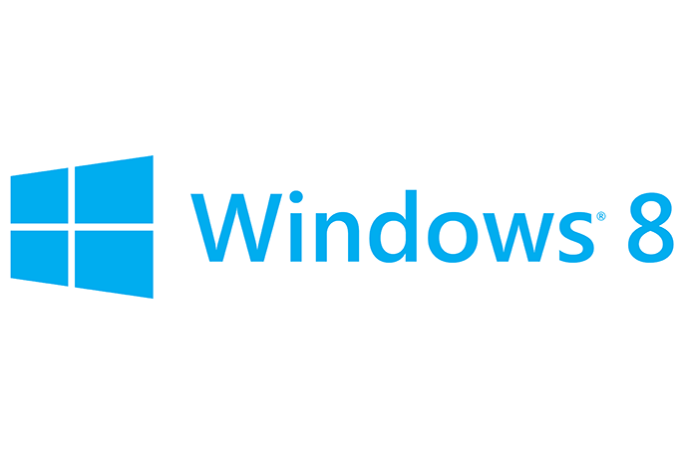






 Quote
Quote







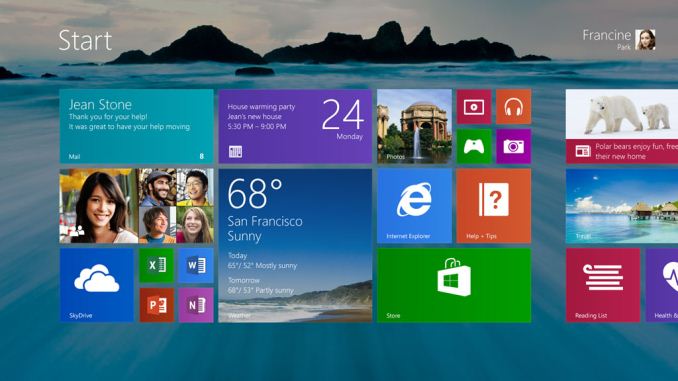
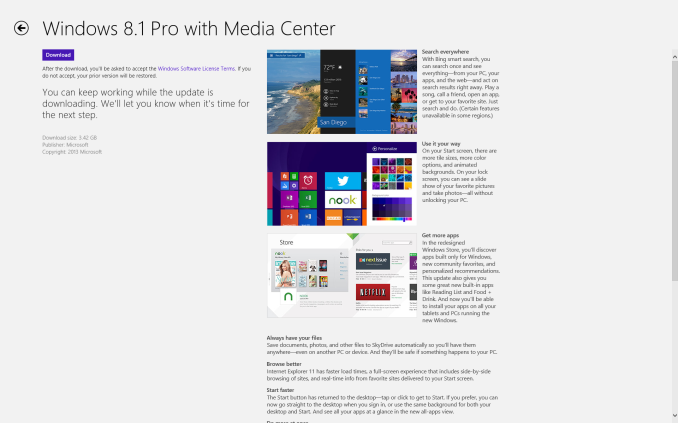
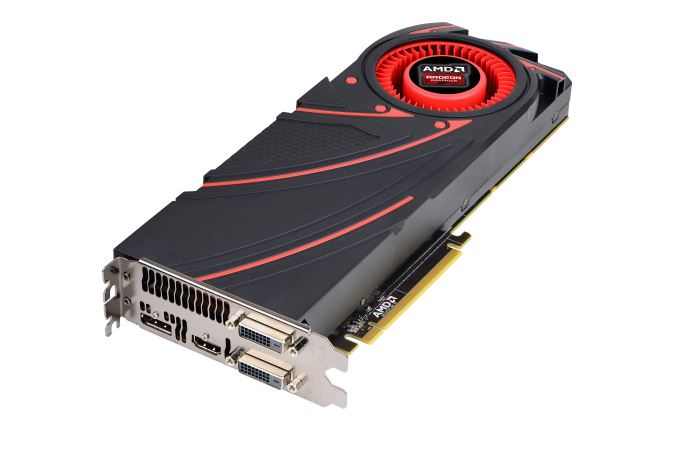
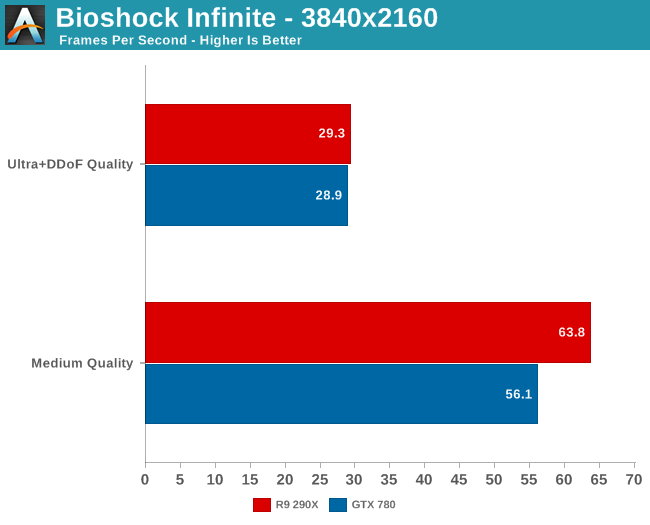
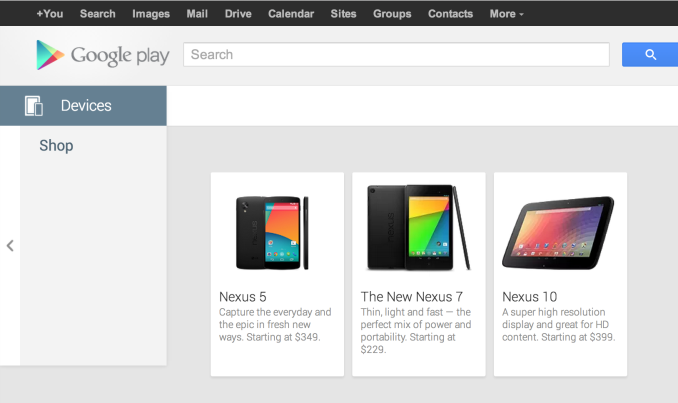

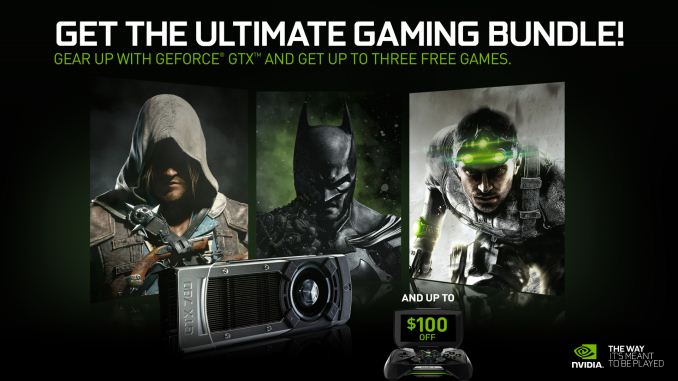

















Bookmarks